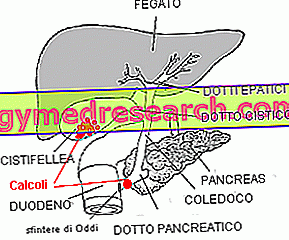In medical language, the term colalemia refers to an increase in bile acids in the blood.
Bile Acids: What are they?

The bile acids are synthesized starting from cholesterol, and once poured into the small intestine they are largely reabsorbed and brought back to the liver, to be recycled and and again secreted into the bile.
Causes
In normal conditions, the concentrations of bile acids in the blood are very low, but they can increase considerably when the liver fails to pour the bile produced into the intestine, due to the presence of obstructions; typical is the case of calculosis of the biliary tract, the presence of tumor masses in the biliary tract or in the head of the pancreas, sclerosing cholangitis, biliary cirrhosis, intrahepatic cholestasis associated with pregnancy, etc.
In these circumstances, one speaks of colalemia, while the medical term colemia indicates an increase in bilirubin in the blood.
Bilirubin is another characteristic component of bile, so the two conditions are often (but not necessarily) associated (generally in the presence of colalemia there is also cholemia, but not the opposite).
Colalemia and colemia cause severe itching of the skin, jaundice, pressure drop with dizziness, headache, sweating with a strong odor, depression, apathy and mood changes.



